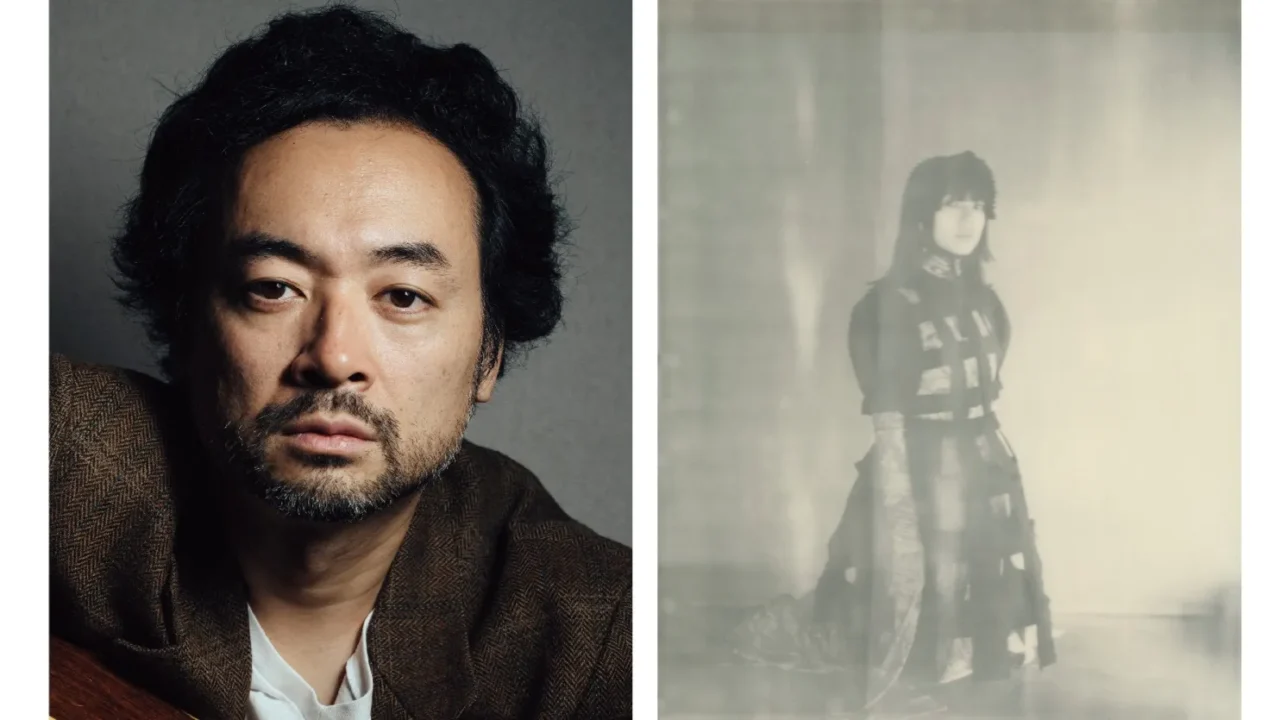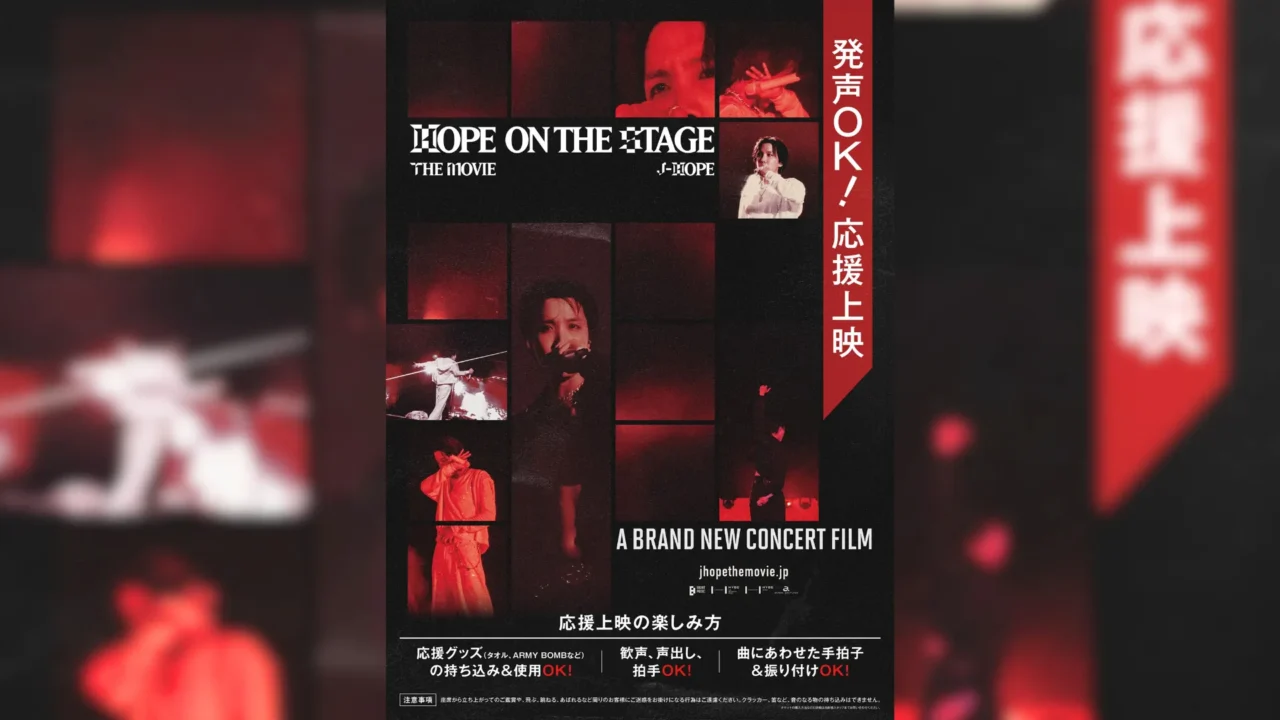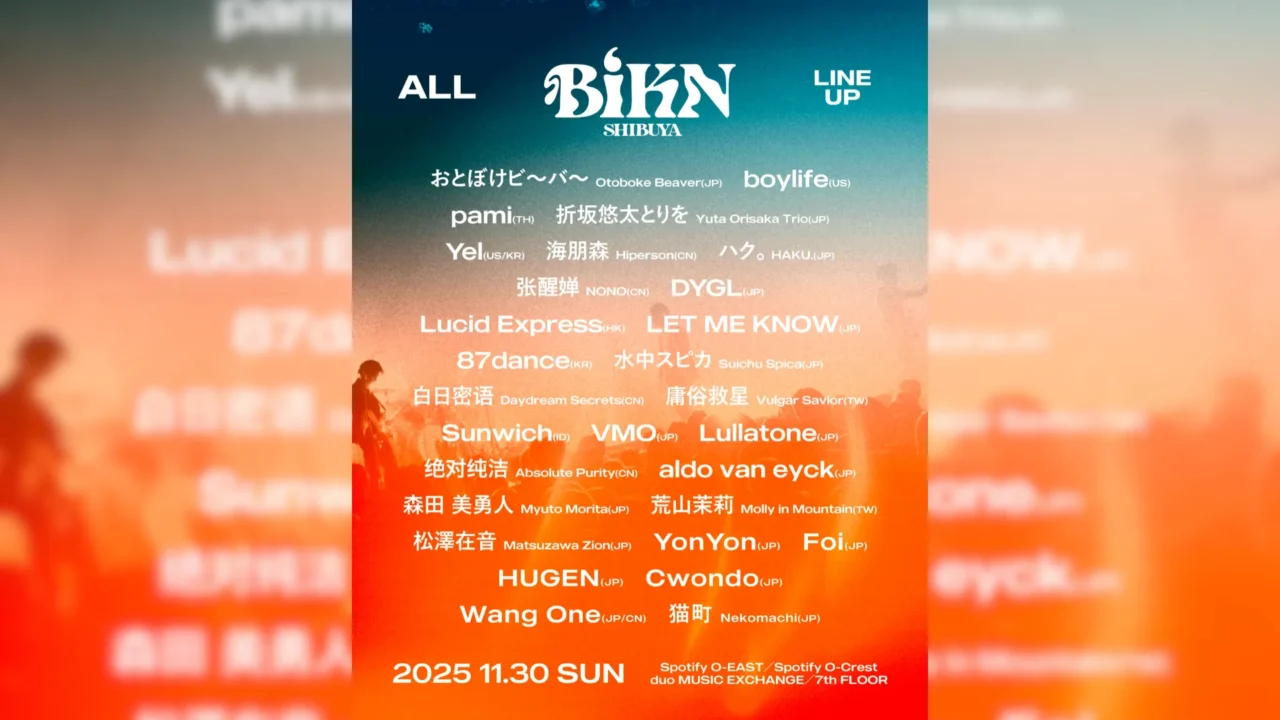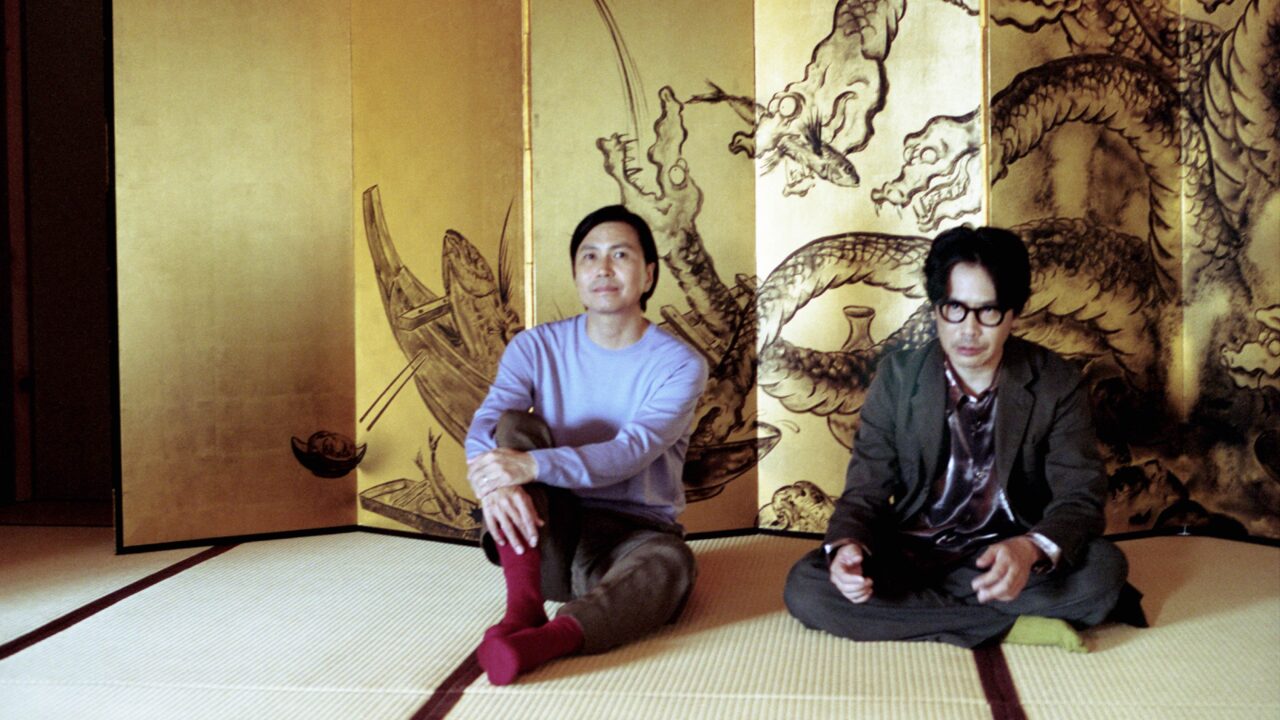Juha in Nishi-Ogikubo is not a jazz kissa or a music bar; it’s more like a ‘local coffee shop.’ However, its selection of background music is quite distinctive, attracting fans not only from the neighborhood but also from afar. Music critic Mitsutaka Yanagaku explores its charm in the eighth installment of his series “Places to Meet Good Music.”
INDEX
Juha: A Model of Perfection
In Tokyo, there are several places that I consider to be “highly polished establishments.” These places meticulously design every detail—interior decor, ambiance created by the clientele, the menu of drinks, and fitting music—that aligns with the vision the owner wants to create or the ideal space they find comfortable. These spaces are a reflection of the owner’s taste but harmonize seamlessly without overpowering. Examples like ‘BAR MEIJIU’ in Iidabashi and ‘Bar Music’ in Shibuya, featured in this series, epitomize this approach.
Alongside the aforementioned two, there’s another place that I feel is “highly polished” in my mind. It’s a café named ‘Juha,’ located a bit south from Nishi-Ogikubo Station. The name is taken from a film title by Finnish director Aki Kaurismäki.

The owner, Shunsuke Ohba, is roasting coffee in this cozy and brightly lit store, which I would call a “coffee shop” rather than a “café,” and the interior is filled with the delicious aroma of coffee beans. From time to time, Ohba-san selects a record, sets it on the turntable, and puts the jacket in place. Then, austere music that goes well with a cup of deep coffee starts to play.
INDEX
Enchanting Appeal of its Unique Music Selection
JUHA has an unusual selection of records. To begin with, the music played here is often music that is not played in other places. And it has nothing to do with trends. I can’t think of any other stores that have a similar music selection trend, and I don’t think it exists. The background music here is literally unique.
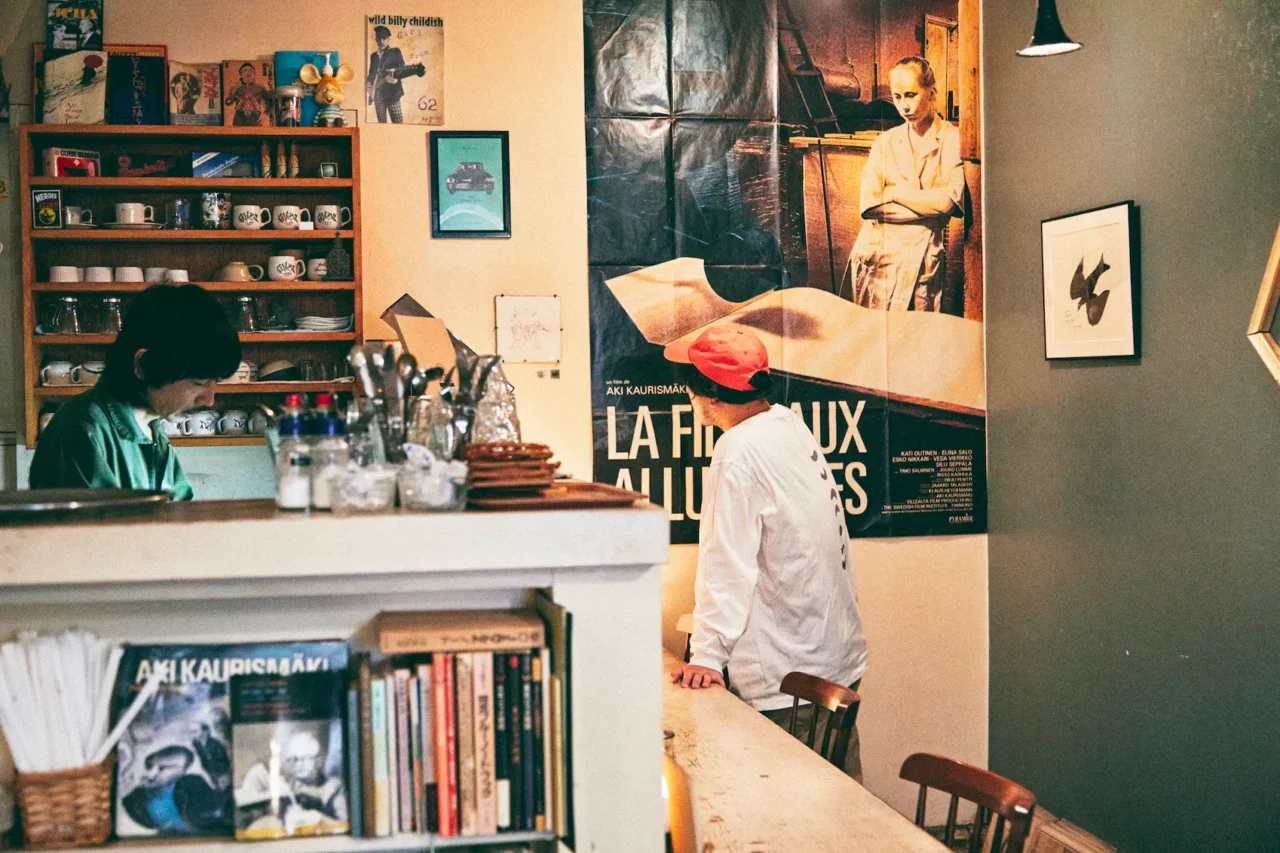
It is somewhat difficult to explain the special music selection. The most succinct way to put it would be to say, “We play jazz, pre-war blues, classical and other music on vinyl,” which is what X’s (formerly Twitter) profile says, but I’d like to try to increase the resolution a bit more.
JUHA’s Instagram has daily photos of the records played here. Most of the music is influenced by American music of quite a long time ago or American roots music, and in terms of genres, it is mostly blues, folk, country, jazz, and classical (small chamber music). There is a good selection of pre-war music (i.e., pre-WWII, pre-1945), with some older music from the 1920s. Other than that, most of the records are from before 1970.
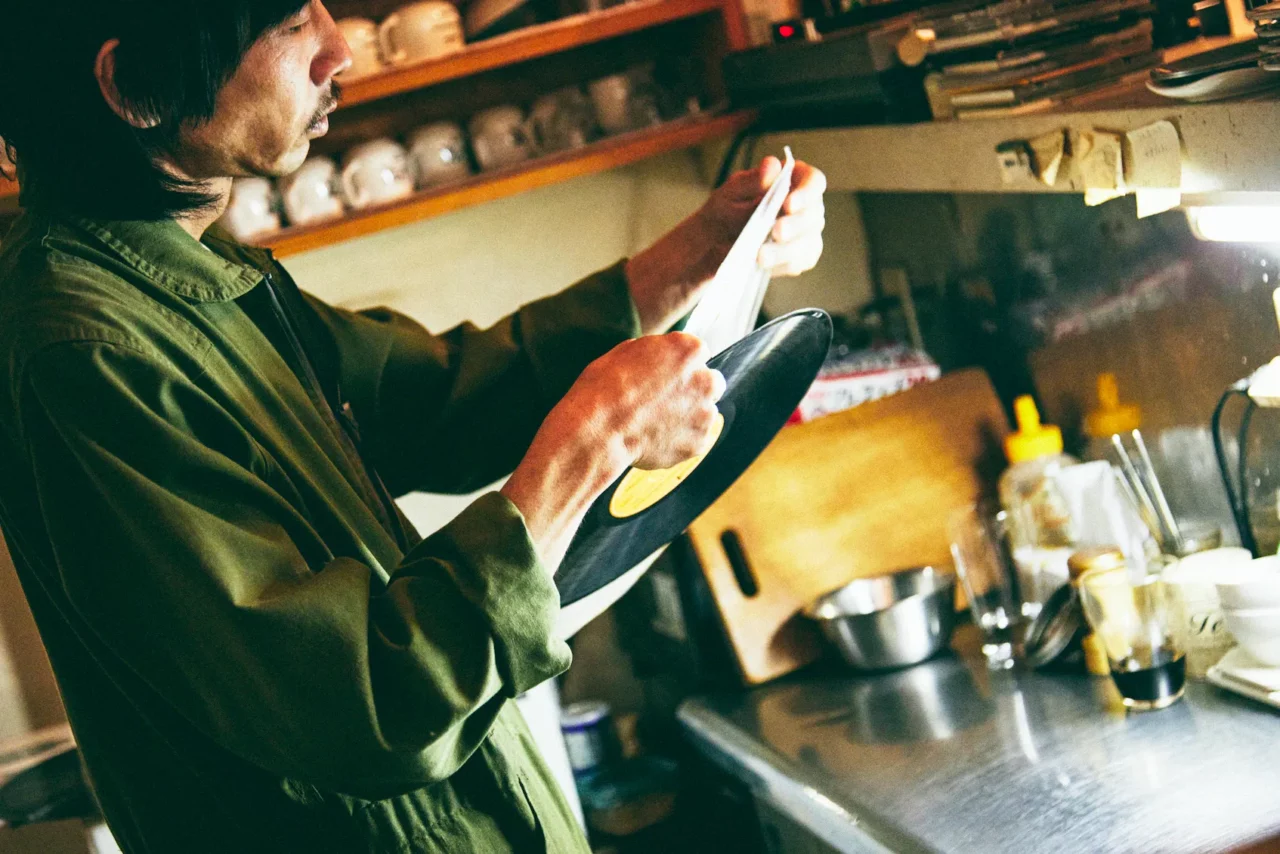
In so-called “jazz kissa,” postwar jazz music is basically played. One of the reasons for this is that LP records were first released in 1948, and from that time on, the sound quality of recordings improved dramatically. Before that, in other words, in the era of SP records, any sound source contained a considerable amount of noise. Even when a sound source originally released on SP was re-released on LP, it was never possible to listen to it in clear sound. Therefore, for listeners accustomed to the LP era (i.e., postwar jazz), when clear sound was available, prewar jazz presented a high hurdle in terms of sound quality. For this reason, it is difficult to find a place that plays prewar music.
At JUHA, however, prewar music, not limited to jazz, but ranging from blues and folk to classical music, is played on a daily basis. However, when the music is played here, the unclear and noisy records are somehow easy to listen to. In fact, they have become so commonplace here that you don’t even notice how old they are.
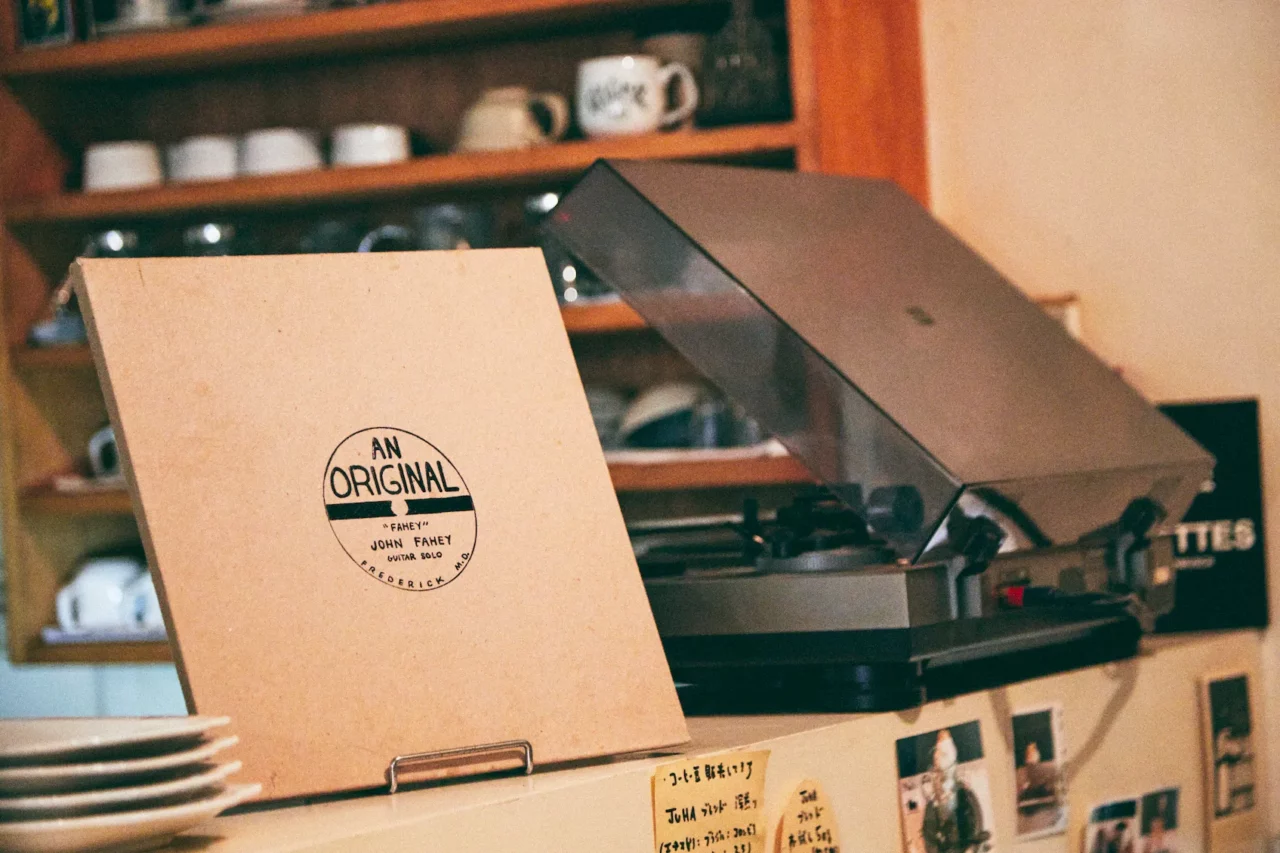
Some people may find nostalgia and romanticism in prewar records, like sepia-colored photographs or black-and-white movies. However, it is not only prewar music that is played at JUHA; jazz from the 1960s is also played, and sometimes classical music from the 1970s. Nevertheless, the natural arrangement of records from different eras, genres, and recording conditions does not seem at all out of place. The old music does not sound particularly nostalgic, but rather, together with records from later eras, it creates JUHA’s worldview.

Sometimes it’s jazz vocals like Fred Astaire’s that flow in a subtle way, and sometimes it’s jazz ensemble great Claude Thornhill who sets the mood. Sometimes it’s folk/blues guitarist Elizabeth Cotton flowing lightly, sometimes it’s the gorgeous technique of jazz guitar legend Eddie Lang. Sometimes it is jazz/folk fusion clarinetist Jimmy Jouffrey flowing, sometimes it is acoustic guitar wunderkind John Fahey sounding strange. Each of these pieces has a strong individuality, yet there is a magical charm here that melds them together as “JUHA-esque music.
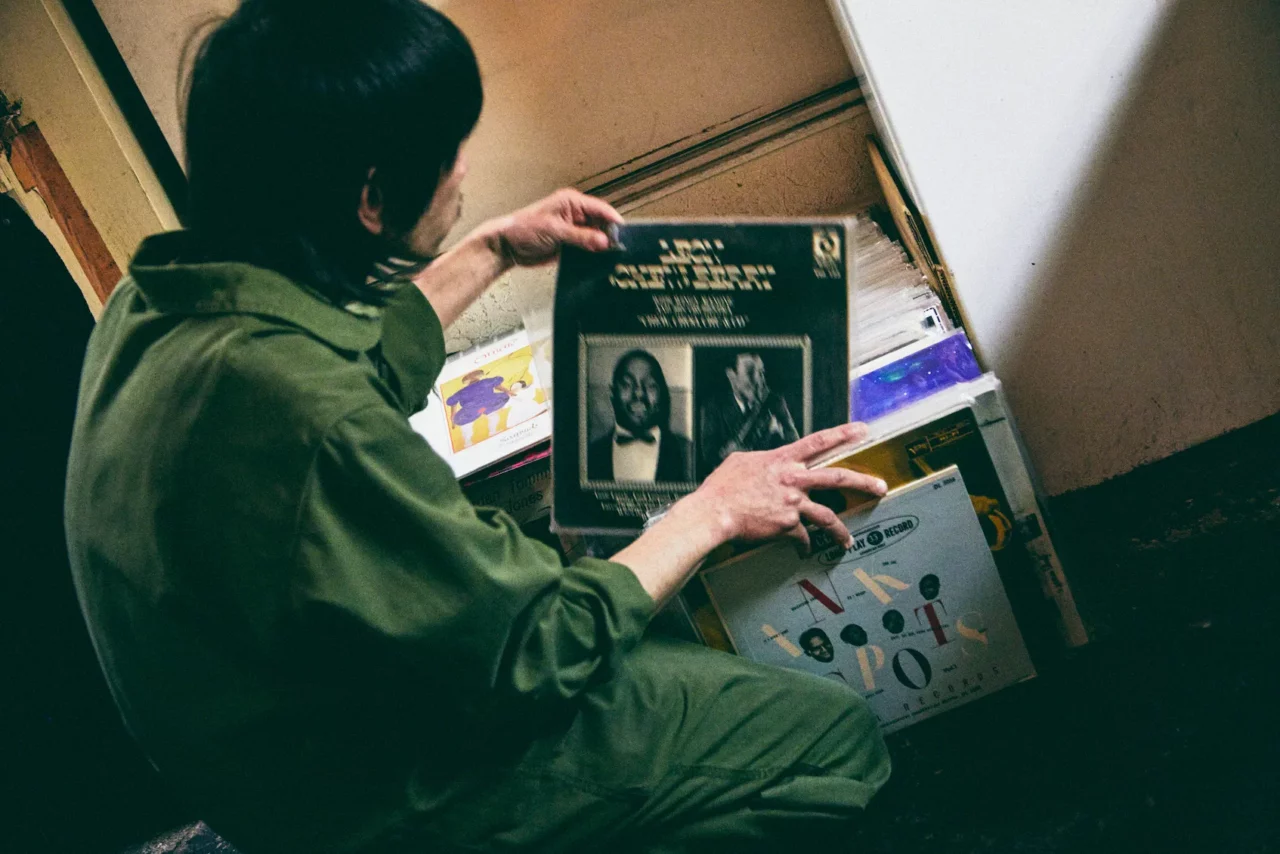
INDEX
The Owner’s Vision: A Fulfilled Expression of Personal Taste
By the way, in the 1990s, there was a path for music enthusiasts to discover music similar to what plays at Juha. One of these paths was through the series of disc guide books called ‘Mondo Music,’ published by Libroport ~ Aspect. I read ‘Mondo Music,’ listened to folk and blues introduced by Soichiro Suzuki there, explored pre-war jazz guided by Haruomi Hosono’s interviews, and I also remember discovering John Fahey and Jimmy Giuffre through that book.

Since Juha’s owner, Mr. Ohba, is of the same generation as me, I assumed our musical paths were similar. When I asked him about it, he surprised me with his answer: ‘Customers often ask if I got into music through “Mondo Music” or through Mr. Hosono, but I actually didn’t go down those paths and don’t know much about them.’ Despite my surprise, I quickly understood his response. Mr. Ohba curated the records at Juha based on his own ears, intuition, experiences, and information from friends, resulting in a collection that now plays at Juha. It makes sense that records from different eras and contexts all sound ‘Juha-esque,’ embodying a mysterious consistency. What plays here isn’t shaped by any specific context or trend, but by Mr. Ohba’s dedication to sounds he personally enjoys. Juha is the fruition of his commitment to staying true to his ‘likes’ to the fullest extent possible.
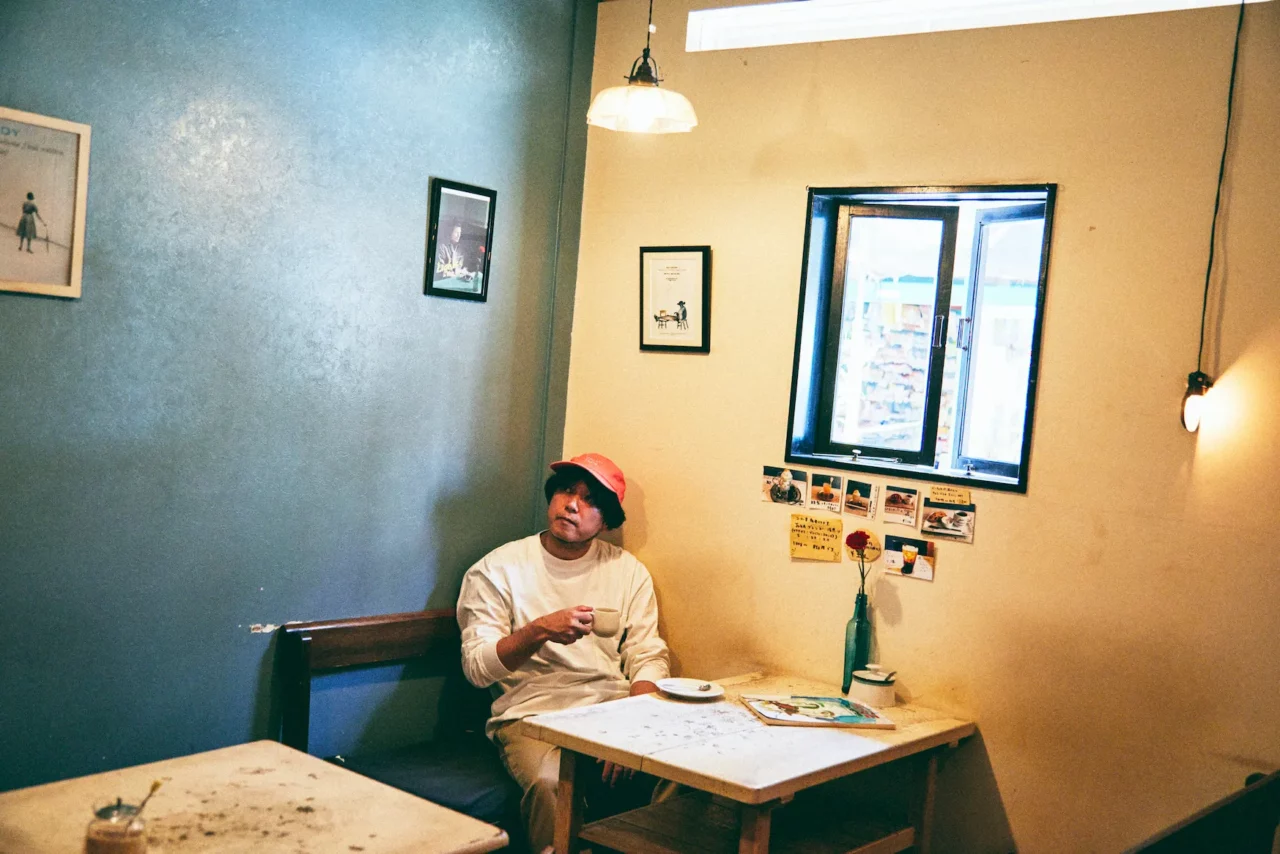
On that day, I had the opportunity to visit before opening hours for an interview, so I walked around the empty shop, examining everything closely. Among posters of Aki Kaurismäki films and flyers related to the jazz-savvy editor Jinichi Uekusa, I noticed a painting on the wall featuring the name Billy Childish. Billy Childish is the frontman of the legendary British garage punk band THEE HEADCOATS. The painting was done by Billy himself. It was so casually displayed that, despite having visited for many years, I only noticed it for the first time on this occasion.
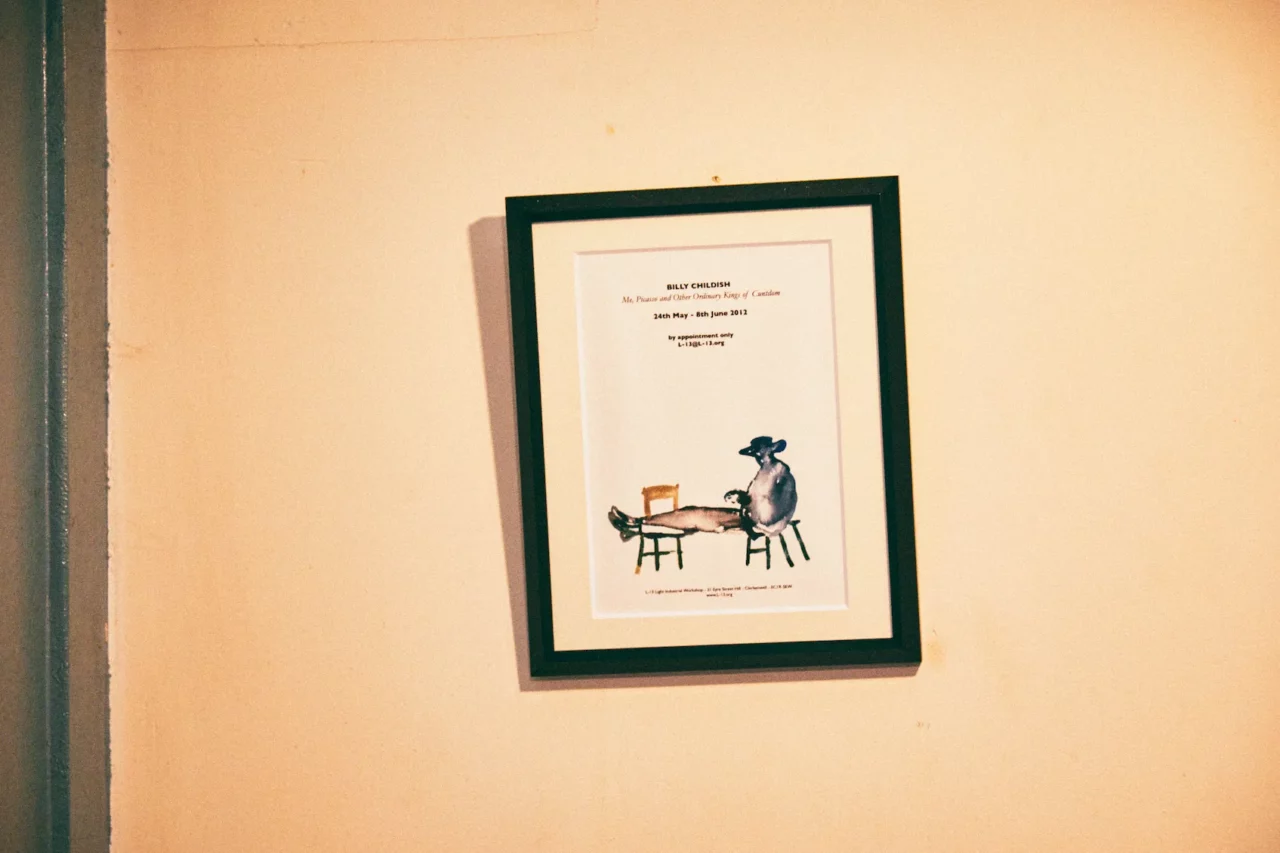
Ohba originally liked garage punk, particularly drawn to Billy and pursued all his expressions as a poet and painter,” he told me. “Indeed, if you like Billy and garage punk, it’s understandable to trace back to pre-war blues at its roots.” At JUHA, not only music but everything placed or displayed is chosen according to Mr. Ohba’s aesthetic sense, and I understood they are all connected. Therefore, that unique worldview that emerges the moment you enter JUHA, and that completeness, must have been born.
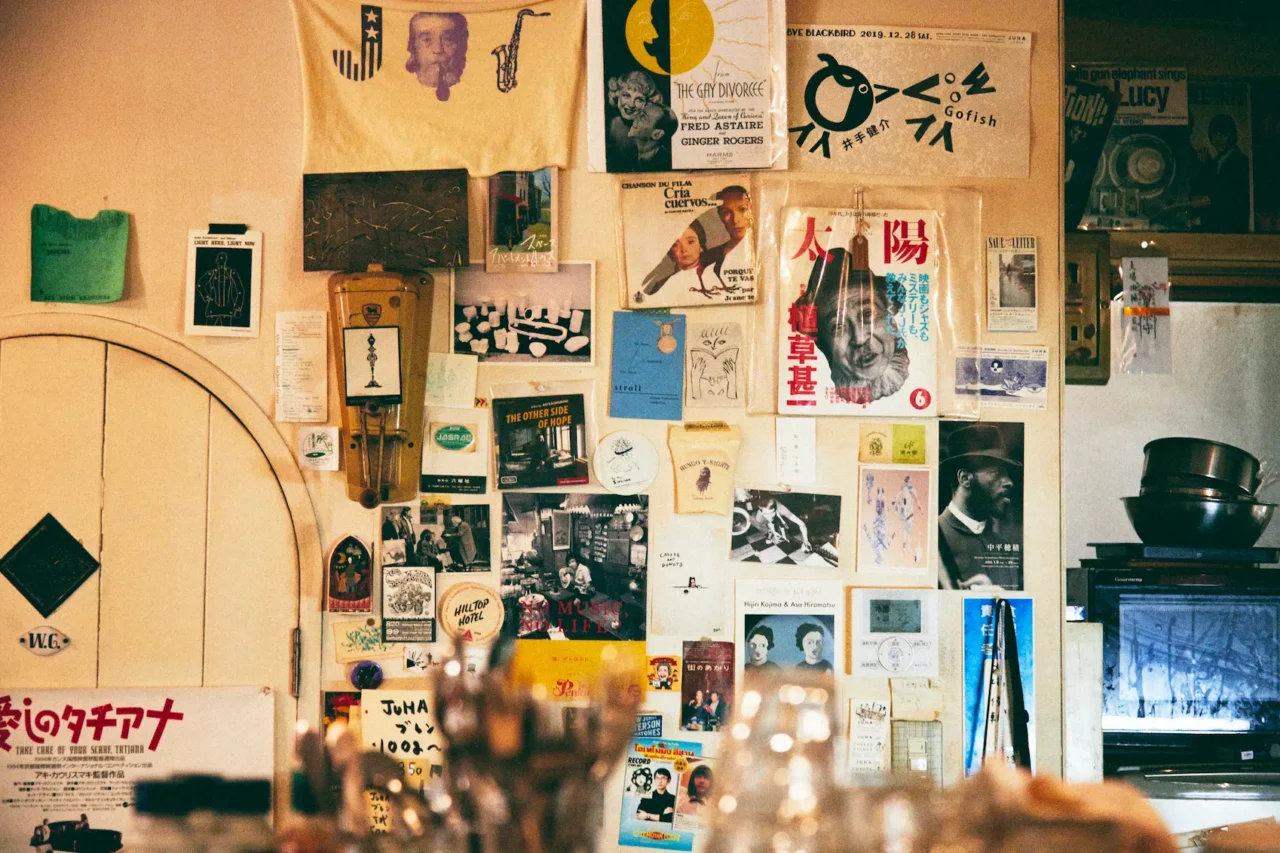
By the way, Mr. Ohba has been collecting records from the Blue Note label again over the past few years. Surely, he will present the classics of jazz café culture with his unique sensibility at JUHA.
JUHA’ Five Albums

Penny Carson Nichols “Trinidad Seed
V.A. “Pioneers of the Jazz Guitar”
V.A. “Female Country Blues Vol.1: The Twenties (1924-1928)”
Arvo Pärt “Für Alina”
John Fahey “The Best of John Fahey 1959-1977”
JUHA
Address: 2-25-4 Nishiogi Minami, Suginami-ku, Tokyo
Business hours: Tuesday – Friday = 13:00 – 21:00, Saturday, Sunday, and holidays = 12:00 – 20:00
Closed: Mon.
Please check Instagram and X for hours of operation and holidays.
https://www.instagram.com/juha_coffee/
https://x.com/juha_coffee














